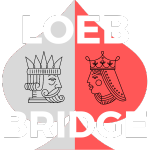On the auction below, North's 2♠ bid is a simple raise showing 3+ spades and 6 - 10 Support Points.
| South | West | North | East |
| 1♠ | Pass | 2♠ |
If North has a hand like ♠Q972 ♥96 ♦K53 ♣QJ65, North could bid 2♠. The hand fits into the range of a simple raise, but North's 4th spade substantially improves the hand. If North-South had an 8-card spade fit, 28.3% of the time a defender will have 4 spades. 3.9% of the time, a defender will have 5 spades. With a 9-card spade fit, a defender cannot have 5 spades. The likelihood of a defender holding 4 spades drops to 9.6%. The presence of a 4th trump increases ruffing power, and improves control of the trump suit. Differentiating a good simple raise with 4+ card support from other simple raises helps your partner better judge when a game may be available.
A good simple raise with 4+ card support is called a Mixed Raise. Specifically, a Mixed Raise shows 7-10 Support Points and 4+ card support. It shows a hand which isn't quite good enough to make an invitational raise (11-12 Support Points and 3+ card support). Because a Mixed Raise requires 4+ card support, it is better than a typical simple raise which requires just 3-card support.
Showing 4+ card support positions your partner to better assess whether a game is availablle. Showing 4+ card support helps your partner better judge their decisions in competitive situations.
Adding Mixed Raises to your repertoire positions your partnership to enjoy these benefits. Because jump bids are often used to show Mixed Raises, you typically have a signficant advantage in competitive auctions. The Mixed Raise well describes your hand, and consumes bidding room your opponents need to describe their hands.
We recommend playing Mixed Raises in the following situations:
- Responding to an opening bid of a 1-of-a-suit
- Advancing an overcall
Mixed Raise as Responder
Partnerships playing Bergen Raises are familiar with Mixed Raises by responder. Bergen Raises give up a natural bid at the 3-level in order to show a Mixed Raise for opener's major. That is fine for pairs playing Standard American. Pairs playing 2/1 Game Force need a reliable way to show responder's invitational one-suited hands. Since Invitational Jump Shifts are needed, Bergen Raises are not recommended for pairs playing 2/1 Game Force. A good option for 2/1 Game Force players is to use a jump raise of opener's major to show a Mixed Raise, and incorporate invitational raises with 4+ card support into your Jacoby 2NT response.
When your opponents interfere in your auction with an overcall or a takeout, it is a good idea to use a jump shift to the suit below opener's major as an artificial bid showing a Mixed Raise (7-10 Support Points and 4+ card support). With that agreement, North's 3♥ bid on the auction below would be artificial, showing a Mixed Raise for South's spades. North might have a hand like ♠Q972 ♥96 ♦A53 ♣Q653.
| South | West | North | East |
| 1♠ | X | 3♥* |
Mixed Raised can be used when responding to a minor suit opening bid. Most partnerships playing Inverted Minors use a raise to the 2-level to show 5+ card support and invitational or better values. A jump raise is typically played as preemptive. The value of a preemptive raise when your partner opens the bidding is questionable. Worse, the preemptive jump raise can give a strong opener a nasty guess. Inverted Minor raises leave a responder with 7-10 Support Points wondering what to bid.
On the auction below, what should North bid with a hand like ♠72 ♥96 ♦A753 ♣K9653?
| South | West | North | East |
| 1♣ | Pass | ? |
North is too weak to make a 2♣ inverted minor raise showing 11+ Support Points. North is too strong to make a traditional 3♣ preemptive raise. Responding 1NT hides North's club support and likely wrong sides a notrump contract. Most partnerships need to respond 1NT with North's hand. Playing a jump to 3♣ as a Mixed Raise makes it easy for North to describe their hand, and positions their partnership to find games which would not be bid if North hides their support by bidding 1NT.
See the "Mixed Raises Part 2" article by Steve Weinstein and Dan Wolkowitz to learn more about replacing the Inverted Minor preemptive raise with a Mixed Raise.
Advanced partnerships may want to consider adding Mixed Raises into their defense against a Michaels Cue Bid of opener's major. See our "Defending a 2-Suite Overcall" article to learn more.
Mixed Raise as Advancer
Mixed Raises can be used to support your partner's overcall. It is increasingly common to use a jump overcall in opener's suit (a jump cue bid) to show a Mixed Raise for your partner's overcall. With that agreement, East's jump to 3♣ in the auction below would show a Mixed Raise.
| South | West | North | East |
| 1♣ | 1♥ | 1♠ | 3♣* |
On the above auction, East might have a hand like ♠72 ♥A963 ♦K875 ♣94. East's 3♣ jump cue bid show a Mixed Raise for their partner's 1♥ overcall. It well describes East's hand, but leaves little room for North-South to describe their hands.
Mixed Raises are highly recommended because they convey a lot of information about your support for your partner's suit and the strength of your hand. The bidding space consumed by a Mixed Raise makes auctions more difficult for your opponents.
To learn more about Mixed Raises, see:
- "Mixed Raises Part 1: How to Bid and Defend Against Them" by Steve Weinstein and Dan Wolkowitz
- "Mixed Raises Part 2" by Steve Weinstein and Dan Wolkowitz




